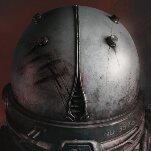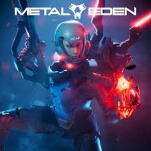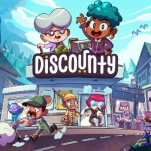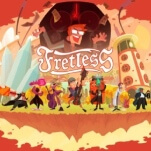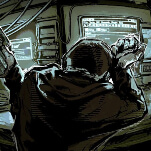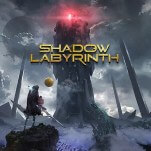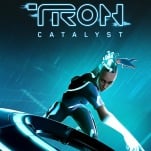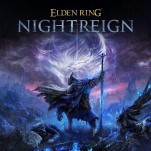Prey: Everything You Know Stays the Same
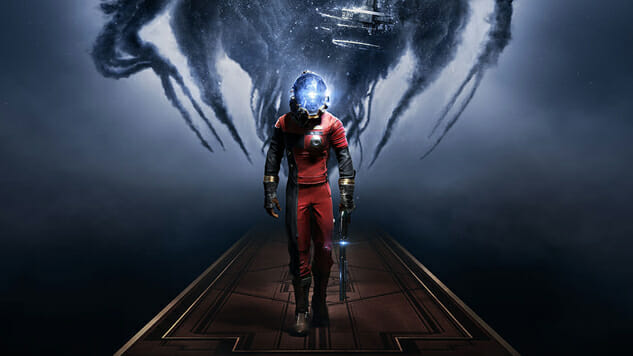
One of Prey’s earliest mission objectives reads: “Everything you know is about to change.” The line is completely literal if read from the perspective of Morgan Yu, the game’s mute protagonist. Morgan has just discovered she (or he; players get to make the ultimately meaningless choice) is trapped aboard an alien-infested space station rather than her apartment back on boring old near-future Earth. Everything she knows has most definitely changed. Read from the audience’s perspective, though, the prompt’s bold letters promise something larger than a first act plot twist. They imply that Prey is about to present something never seen before—a novel take on what initially looks like a run of the mill shooter.
The following hours undermine this confidence with a profound familiarity. Morgan picks through garbage cans and desk drawers for health-restoring food and items. She hacks computer terminals to read the emails of the station’s distraught crew. She kills aliens with a combination of guns and supernatural powers. She encounters lots of industrial debris that blocks her way and, using a combination of tools, works her way past it. All to say that, far from revolutionary, Prey is more of a Frankenstein’s monster of science fiction videogame design, component parts exhumed from the stately corpses of revered series like System Shock, Bioshock and Deus Ex.
A simple overall mission—destroy space station Talos 1 and purge it of an invading alien force—is meant to carry the player through a few dozen hours of the above tasks, repeated ad nauseam. After learning that she’s wiped her own memory by tampering with superpower-granting brain implants, Morgan sets about her task. Talos 1 is enormous, a floating skyscraper whose various research facilities and office spaces form a contiguous labyrinth within which the entirety of the game takes place. It’s beautifully designed as a piece of videogame architecture. A spacious plaza or cluttered room might hide small mouse-high maintenance shafts in a dim corner while a network of vents and metal struts run along a high ceiling. Prey’s mazelike design encourages multiple routes from area to area. Finding what path to take, whether it’s shooting insta-dry bubbles of caulking to make a climbable ramp or transforming into a coffee mug to bounce through the bottom of a blocked up doorway, is a consistently gratifying (if fairly aimless) way to get from place to place.
What’s less enjoyable is looking at the station itself. Cribbing alternately from the Cold War kitsch of propaganda posters (repurposed here as corporate sloganeering), the sleek ornamentation of Art Deco office buildings and the blunt utility of power plants the world over, Talos 1 leans so far into the last of these influences that its handful of aesthetic inspirations are flattened into a bland mush. The thick lines and bright colors of a signpost are drowned out by hallways full of grey metal walls and offices overrun with glowing white, Apple-esque computer screens. The aimlessness of its visuals is mirrored, too, in the aliens infesting Talos 1. Each of them a form of pulsating, oily-looking gunk, only the spiderlike “mimic” (which hides in plain sight by assuming the shape of unassuming objects before attacking) is memorable. The others—swarming, fragile balls of goop that explode on contact, floating masses and humanoid forms that shoot different types of energy—wander around in seemingly purposeless routines, running at Morgan as soon as they spot her.
None of these creatures are enjoyable to fight. It isn’t an endorsement of Prey’s attempts at tension that entering a roomful of aliens instills an immediate sense of dread. Aside from the upgraded shotgun’s satisfying kick, there’s little to enjoy in whittling down an aggressor’s health bar with a tinny pistol, weightless laser gun or the variety of flame, lightning and telekinetic energy Morgan learns to summon (an annoying bug from the PlayStation 4 version—the player’s movements continuing to drift forward after controls are released—exacerbates these issues). The aliens end up a greater nuisance than real danger, an obstacle that obscures the enjoyment of exploring an environment by prompting brief unwelcome spasms of shooting, health pack-devouring and losing track of what exactly the player was trying to accomplish before they drifted into view.
What that goal might have been is, sadly, never very exciting in the first place.
Prey’s storytelling is largely sequestered to audio diaries and paragraphs of work notes left behind by Talos’ crew in the time before the aliens arrived. A few characters show up in person to request things of Morgan, but most of the time, the game is populated only by bits of dry text meant to form the impression that real people’s lives were staked on Morgan’s success. It’s uninspiring stuff—the kind of voluminous but paper-thin material that sees an alcoholic scientist set his computer password to “v0dka.” (The corresponding emails are, of course, all concerned with the scientist’s drinking problem.) The opening hour’s willingness to play with player expectations, Morgan realizing she’s inside an advanced simulation in space rather than living out a day of work, are quickly abandoned for an almost comically drawn-out process of getting the necessary tools to blow up the station.
A few moments hint at actual drama. There are romances torn apart by corporate hierarchy. There’s an evocation of Morgan’s role as a powerful executive at Talos, removed from the ordinary life of her employees. But, mostly there are plot points about unlocking doors and fixing machinery—restoring power to parts of the station or finding ways to travel to areas made inaccessible by the alien takeover. Prey never feels like it has anything to say, kicking off with an intriguing bit of mystery then foregoing any real development until a clunky, post-credits scene attempts to salvage the entire story with an unearned twist. The game’s perfunctory atmosphere is codified in past-tense audio and text logs. In its baffling soundtrack, songs start abruptly after moments of silence so that bits of somber, vaguely Latin-sounding guitar fingerpicking can lend emotional heft to scenes like rebooting a power reactor. It’s a game that knows it should give its audience something to feel without seeming to care much about what that feeling is.
This impression pervades Prey. Without any clear sense of narrative or aesthetic purpose, it gets by with references to classic science fiction stories, visual art and games. Though Talos 1 is laid out meticulously, impressive in scope and detail, it adds very little to the genre it draws from. The people and aliens who fill its space—and the reasons Morgan has for spending so much time picking through its confines—are retreads of ideas and conventions visited many other times before. As much as its opening objective prompt promises, Prey doesn’t represent change. It’s just more of what what’s been done before.
Prey was developed by Arkane Studios and published by Bethesda Softworks. Our review is based on the PlayStation 4 version. It is also available for Xbox One and PC.
Reid McCarter is a writer and editor based in Toronto whose work has appeared at Kill Screen and Playboy. He is the co-editor of SHOOTER (a compilation of critical essays on the shooter genre), edits Bullet Points Monthly, co-hosts the Bullet Points podcast and tweets @reidmccarter.
-

-

-

-

-

-

-

-

-

-

-

-

-

-

-

-

-

-

-

-

-

-

-

-

-

-

-

-

-

-

-

-

-

-

-

-

-

-

-

-













